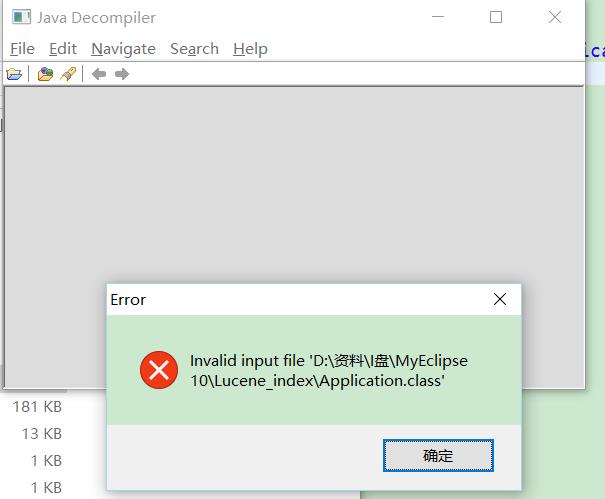java自定义类加载器
Posted 王南辉
tags:
篇首语:本文由小常识网(cha138.com)小编为大家整理,主要介绍了java自定义类加载器相关的知识,希望对你有一定的参考价值。
package lucene.baidu.tets;
import java.io.File;
import java.io.FileOutputStream;
import java.io.IOException;
import java.io.RandomAccessFile;
import java.nio.ByteBuffer;
import java.nio.channels.FileChannel;
public class WriteByte {
/**
* 转换四字节,此处主要加密使用可以自己使用加密算法,最后揭秘即可
* @param iValue
* @return
*/
public static byte[] Int2Bytes_LE(int iValue) {
byte[] rst = new byte[4];
// 先写int的最后一个字节
rst[0] = (byte) (iValue & 0xFF);
// int 倒数第二个字节
rst[1] = (byte) ((iValue & 0xFF00) >> 8);
// int 倒数第三个字节
rst[2] = (byte) ((iValue & 0xFF0000) >> 16);
// int 第一个字节
rst[3] = (byte) ((iValue & 0xFF000000) >> 24);
return rst;
}
public static void main(String[] args) throws IOException {
File file = new File("D:/资料/I盘/MyEclipse 10/Lucene_index/bin/lucene/baidu/tets/Application.class");//读class文件转换字节然后加密使用
FileChannel fout = new FileOutputStream("D:/资料/I盘/MyEclipse 10/Lucene_index/bin/lucene/baidu/tets/Application.class").getChannel();//写入文件
RandomAccessFile accessFile = new RandomAccessFile(file, "rw");
ByteBuffer bf = ByteBuffer.allocate((int) file.length() * 4);
bf.clear();
int read = -1;
while ((read = accessFile.read()) != -1) {
byte[] bytes = Int2Bytes_LE(read);
bf.put(bytes);
}
System.out.println(bf.limit());
bf.flip();
fout.write(bf);
fout.close();
}
}
application.java
package lucene.baidu.tets; /** * 只返回一个句话 * @author wangnanhui * */ public class Application { public static String getArr(){ return "MyClassLoad hello world"; } public static void main(String[] args) { System.out.println(Application.getArr()); } }
运行后得到加密后的文件,已经反编译不过来了

解密代码
package lucene.baidu.tets;
import java.io.File;
import java.io.FileInputStream;
import java.io.FileNotFoundException;
import java.io.IOException;
import java.lang.reflect.InvocationTargetException;
import java.lang.reflect.Method;
import java.nio.ByteBuffer;
import java.nio.channels.FileChannel;
class MyclassLoad extends ClassLoader {
/**
* 解密方法
* @param bytes
* @return
*/
public int Bytes2Int_LE(byte[] bytes) {
if (bytes.length < 4)
return -1;
int iRst = (bytes[0] & 0xFF);
iRst |= (bytes[1] & 0xFF) << 8;
iRst |= (bytes[2] & 0xFF) << 16;
iRst |= (bytes[3] & 0xFF) << 24;
return iRst;
}
/**
* 返回一个class
* @param filePath
* @return
*/
public Class<?> getMyClass(String filePath) {
try {
File file = new File(filePath);
int length = (int) file.length();
FileChannel channel = new FileInputStream(file).getChannel();
ByteBuffer bytes = ByteBuffer.allocate(length);
ByteBuffer loader = ByteBuffer.allocate(length / 4);
byte[] read4 = new byte[4];
bytes.clear();
loader.clear();
channel.read(bytes);
bytes.flip();//开始读取 四个byte的读 , 然后解密到原来的byte
for (int i = 0; i < length; i += 4) {
bytes.get(read4);
loader.put((byte) Bytes2Int_LE(read4));
}
return super.defineClass(loader.array(), 0, length / 4);
} catch (FileNotFoundException e) {
e.printStackTrace();
} catch (IOException e) {
e.printStackTrace();
}
return null;
}
public static void main(String[] args) throws NoSuchMethodException, SecurityException, IllegalAccessException, IllegalArgumentException, InvocationTargetException {
MyclassLoad loader = new MyclassLoad();
Class<?> cls = loader.getMyClass("Application.class");
System.out.println(cls.getName());
Method method = cls.getMethod("getArr");
System.out.println(method.invoke(cls));
}
}
运行后

以上是关于java自定义类加载器的主要内容,如果未能解决你的问题,请参考以下文章